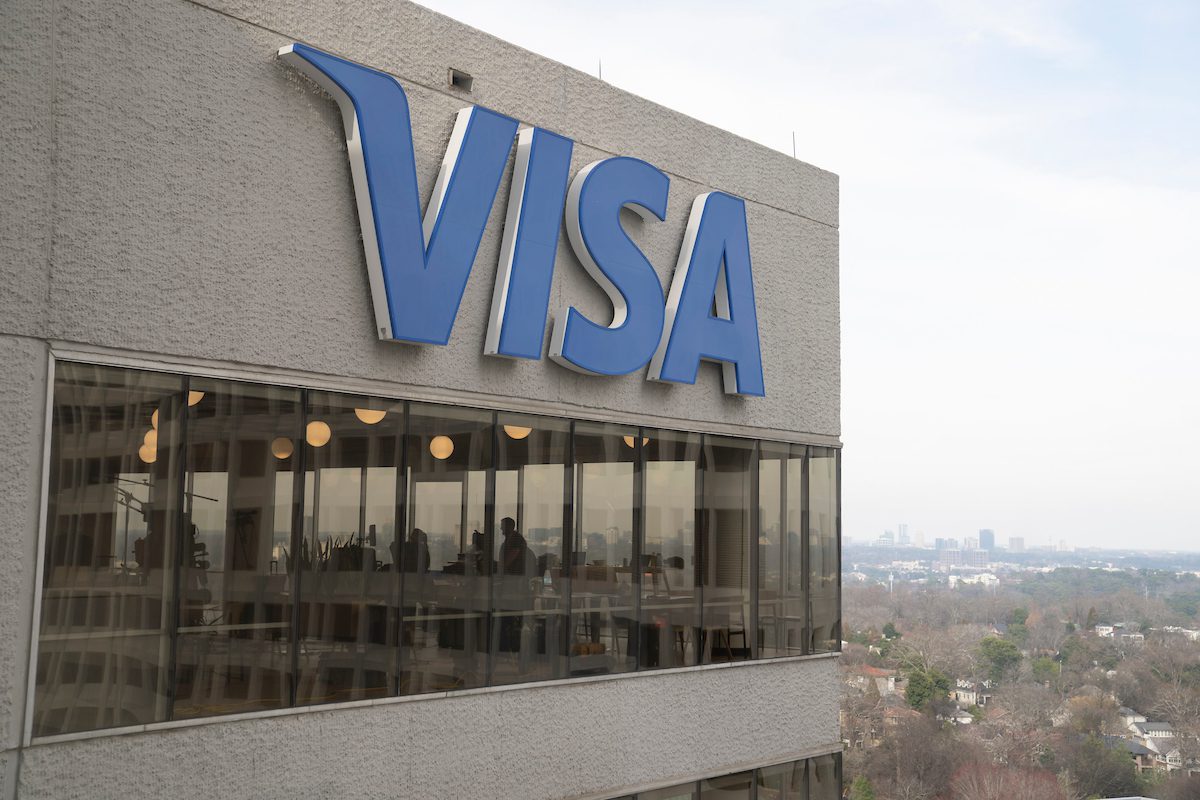Visa Direct Transactions Soar 20% as P2P and B2B Use Cases Gain Ground

Visa’s fiscal third-quarter results show traction in new payment flows and management pointed toward resilient customer spending.
The payment networks’ most recent results show that overall payments volumes gained 9% during the quarter to $3.2 trillion, compared with a 10% increase in the immediately preceding quarter.
Credit card spending was up 13%; debit growth was 7%. Cross-border volumes gained 17% on a constant dollar basis as travel spending remains buoyant.
New Flows Gain 20%
On the conference call with analysts on Tuesday (July 25), CEO Ryan McInerney said, “our new flows capabilities, such as Visa Direct, are an important differentiator to our clients when they’re making consumer payments decisions.” New flows, he said, was up 20% as measured in constant dollars, and commercial volumes gained 9% in the quarter to $405 billion. Visa Direct, in particular, he said, saw fiscal third quarter transactions grow by 20% to 1.8 billion. Visa Direct’s growth is being underpinned by domestic P2P transactions in countries such as Mexico and with B2B cross-border payments that help improve supplier payments.
“This quarter we succeeded in selling more than 300 new issuing services, 600 new acceptance services and almost 500 new risk and identity services,” McInerney said on the call, adding that in some cases, those sales occurred within the same client.
Outgoing CFO Vasant Prabhu said that indexed to 2019, global payments volume was up 48%. And drilling down into U.S. results, he said that payments volume in the country was up 6% year on year and that transaction growth since March has been steady at pre-COVID levels of 8%.
Average ticket size has been down 2% due to moderating inflation. Card present spending was up 5%, while card not present volume, ex travel, was 8% higher.
“Consumer spend across all spend bands from affluent to low spend remains stable,” noted the CFO. “Since March, our data did not indicate any behavior change across consumer segments. Putting all this together, we continue to believe that the primary driver of the step down in U.S. payments volume growth since March is moderating inflation and that the consumer has remained resilient so far.”
Cross-border e-commerce spending grew year over year in the low double digits in line with pre-COVID growth rates, said Prabhu.
Through the first three weeks of July, U.S. payments volume was up 6%, with debit up 6% and credit up 6%.
Asked on the conference call about the recent suit by Block on swipe fees, McInerney said that “we have a wonderful relationship with Block” and said that the suit is included in the MDL 1720 class action lawsuit, “so I would really put it in the category of nothing new here.”
Management also noted on the call that value-added services represent about 20% of company-wide net revenues, and per McInerney’s commentary, “the truth is, we are at the beginning of the journey across all of our value added services businesses. They all have enormous TAM … and enormous runway,” borne by security features, real time risk scores and tokenization, among other initiatives. B2B remains a significant opportunity, as it’s a $1.5 trillion global total addressable market, management said.
Analysts also asked on the call about surcharging — where Visa lowered the cap from 4% to 3% — Prabhu said, “we don’t feel great that consumers get surcharged. But of course, in certain jurisdictions in the U.S. around the world, merchants have the ability to do that. And some choose to do it, many choose to do it, and then they choose to pull back on it because it’s not a great customer experience.” He contended that the lowering of the cap is representative of “just making sure that when consumers do get surcharged, it’s something that’s fair and equitable, and that was the purpose of the change.”
There was some discussion about regulation, including Regulation II of the Durbin amendment, which sets up mandates on routing tied to debit cards. McInerney said that the company remains “confident about our ability to compete … we think that many merchants will still choose to route to Visa.”

